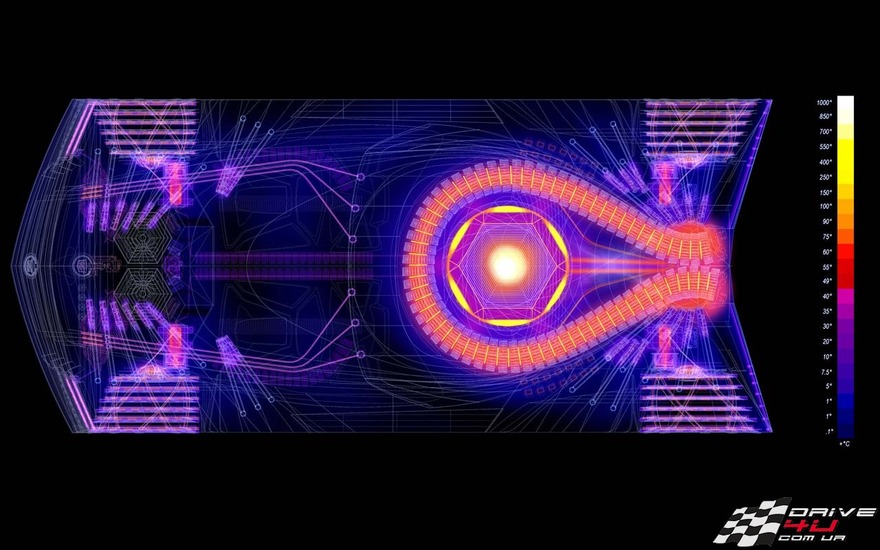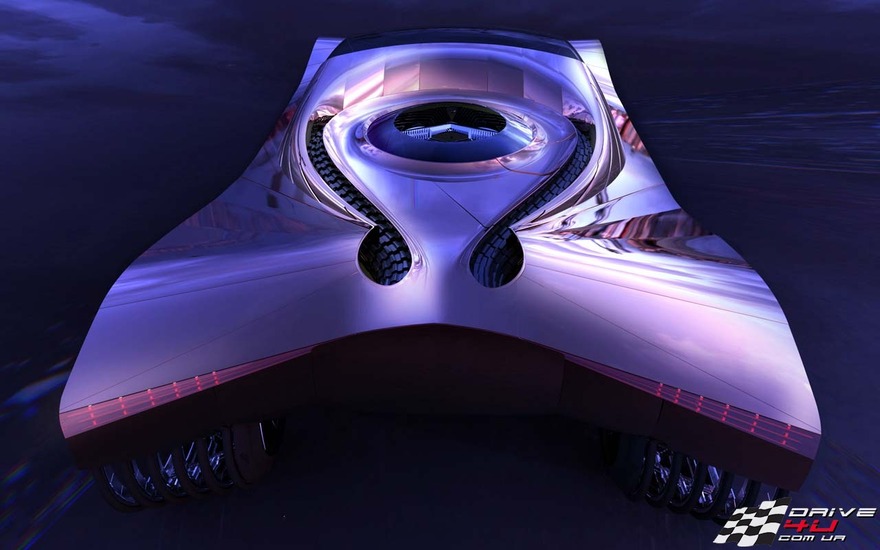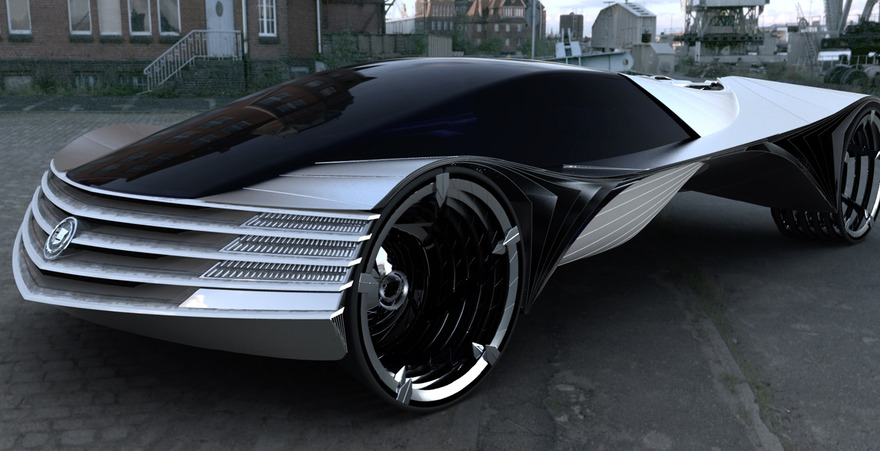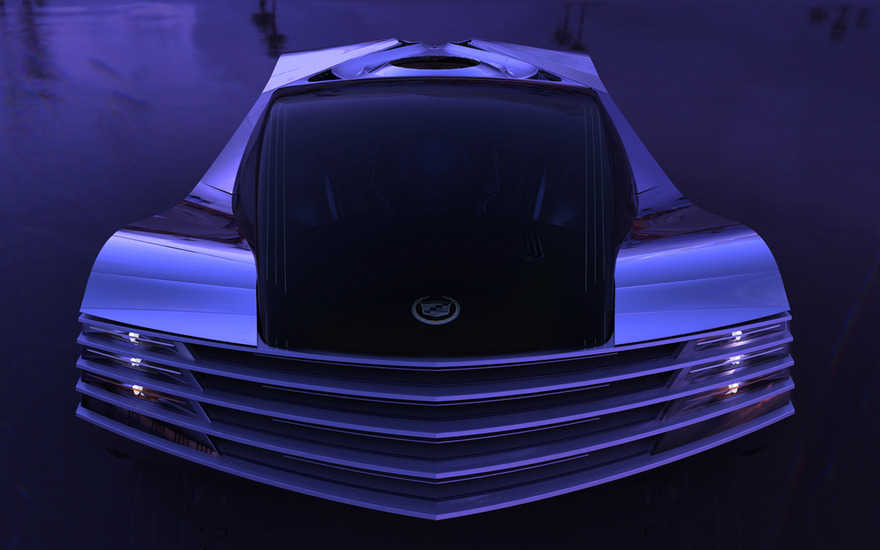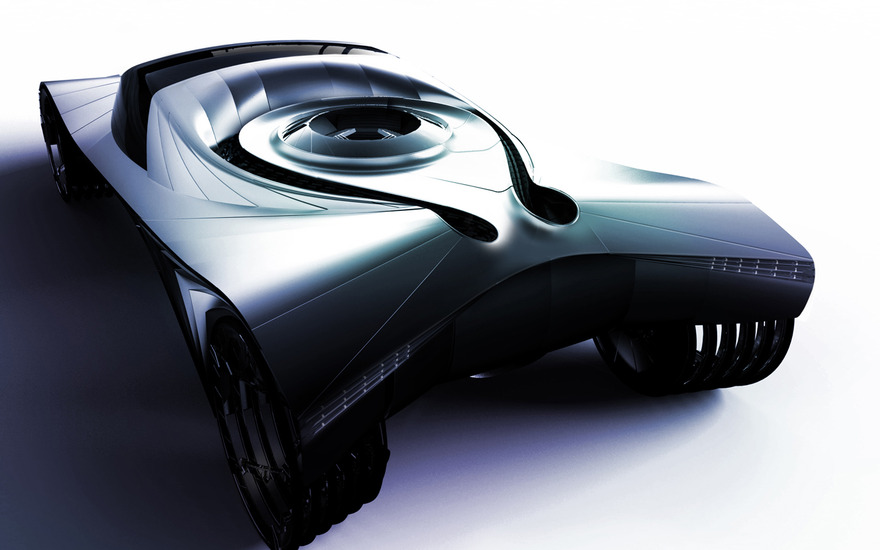The idea of creating the most eco-friendly supercar is increasingly occupying the minds of scientists and automotive designers. The current booming market of hybrid and electric cars suggests that the future has already arrived.
Now it’s time to predict the future for the future, which might seem like tautology but there is no other way to put it. It’s going to be extremely difficult for an everyday Joe to accept and adjust to the idea of a car that can last 100 years (!) without maintenance and run on eco-friendly fuel with almost no refuelling.
Nevertheless, back in 2009, Cadillac reported about developing a similar concept vehicle. A supercar with a futuristic design will run on low-waste nuclear fuel based on a lightly radioactive heavy metal Thorium (Th). It is one of the densest materials known in nature. Thorium is used for strength improvement in aircraft industry and it can produce large volumes of heat. Among other radioactive elements, thorium is considered to be the least harmful and dangerous one in terms of affecting human health. People have started to use it in automotive industry since the World War II.
The American inventor Loren Kulesus brought forward an ambitious proposal to use nuclear fuel instead of the regular fuel at the 2009 Chicago Auto Show. Charles Stevens, an inventor and entrepreneur, and the engineers from Laser Power Systems (LPS) from Connecticut, USA, picked up this idea, developed a concept of a nuclear engine and brought this project to life. The new Cadillac concept car was named the World Thorium Fuel or Cadillac WTF Concept.
The Cadillac WTF Concept is just a virtual prototype so far. Despite its amazing exterior and unique engineering design, there are still some blank spots to be filled in:
— how to get inside this car;
— what materials will be used to build it;
— approximate cost;
— production kick-off date.
What is known is that the owner of such car would need just 8 grams of thorium for a lifetime. Using this amount in the unit could power an average car for about 300,000 miles (482,800 km) with no harmful emissions at all. The scientists have calculated that a gram of thorium has the equivalent potential energy content of 7,500 gallons (28,390 litres) of petrol. Nuclear reaction produces a large amount of energy, which is enough to charge the battery of this car and other devices (for instance, an electric car of your friend).
Thorium is estimated to be four times more abundant than uranium in the Earth's crust, meaning that its use in atomic energy industry would allow solving humanity's energy demand for hundreds of years. The ecological value of such fuel is enormous as thorium fuel cycles produce less long-living isotopes. The price of 1 kg of thorium is $80.
Small bits of thorium can be used to build a laser beam that heats water, produces steam and powers an energy-producing turbine, which will be used in the concept car. The role of thorium is to put all the car’s internal programmes into action with maximum efficiency similar to the work of the human nervous system.
Charles Stevens, CEO and chairman of Laser Power Systems, says that the thorium-powered engine prototype is rather compact, weighs just 225 kg and is easy to fit under the bonnet of an average car. “The car will wear out before the engine. There is no oil, no emissions — nothing”, Stevens says.
The authors of this amazing concept intend to use ultra-strong and long-lasting materials in the car's technical design. Every major system is redundant in case of a failure. This would allow the owner of a similar WTF Concept to forget about any maintenance or repair issues for 100 years even if running the car on a daily basis.
Its Salvador Dali-styled futuristic design is unusual and somehow strange: the body of the Cadillac WTF is shaped like a snake's tongue or a forked arrow. It has 24 wheels, 6 on each side. Each wheel is rather narrow and has a built-in induction motor. There is no need to replace them, they just have to be adjusted every five years.
The flexible body of the Cadillac WTF allows intuitive handling characteristics. It simplifies interaction with the car, acting like the muscle structure of a human being. For example, the angle of the wheels to the contact surface of the road automatically adjusts according to the movement of the vehicle maximising the energy used to power the vehicle.
Developers mounted the nuclear reactor in the rear part of the concept car for safety reasons. It would be interesting to find out about the car’s crash behaviour and what happens to the reactor during crash testing; however, the project designers do not spill a word on this issue either.
They say that the revealed version of the concept car might be used only in countries with warm and dry climate, which is one of the most obvious drawbacks. Another negative side is that the car will need a special cover to protect the driver and people around from radiation and this cover might be too heavy for a street-legal car. However, the concept is likely to undergo quite a few changes and improvements before leaving the Cadillac’s design office and production department.
The life of oil barons will change drastically if the Cadillac WTF concept springs to life. The United States, India and Australia will be setting the price policy as these countries have more than 30 percent of world thorium reserves, which amount to nearly 1 million tonnes. Thorium is concentrated in felsic igneous rocks and rock-forming minerals in the crust of the Earth (granite, sand, mica, seawater). It seems like Cadillac decided to turn the world's economy upside-down.
There is one more important issue here: production of thorium-based fuel lies in the field of atomic energy industry and there is a real danger that some evil geniuses might use it to produce nuclear weapons. We hope that the project engineers do realise their responsibility and will be able to secure nuclear engines in case these cars become available to every person on our planet.
All in all, the Cadillac WTF that runs on nuclear fuel changes the very idea of cars: minor harm to environment, an incredibly long operating life in comparison with the current vehicles, economy on fuel and maintenance. This looks like a utopian idea, doesn’t it?
AUTHOR'S NOTE:
Both the name of the car and the project itself are rather ambiguous: maybe it’s just a joke or another PR move to attract attention to the company.
Just imagine that such a durable and eco-friendly car does exist. The majority of taxpayers would consider a supercar like that to be ideal and would dip into their pockets to purchase one. They would stop buying spare parts and fuel. This would mean that within the next 100 years after the launch of production of such cars many oil barons and automakers would have to register with the employment centres in case they cannot come up with a new application field of their enterprises.
Well, it staggers belief. However, our grandparents could not even imagine that all Lenin monuments will be demolished and children will use a small thin box called a smartphone to tell their parents that they have already had their dinner, and are now heading to the homework club, karate or synchronised swimming class.
Maybe in just several years my grandchildren would give me a wheeled nuclear reactor like that as a birthday present so that I could visit my doctor… Or wherever grandmas would go in those days… Perhaps, instead of a doctor they would visit a dance club, as like Bugatti and Lykan, which give Swiss watches as a bonus, the WTF would come fitted with an eternal youth elixir…

